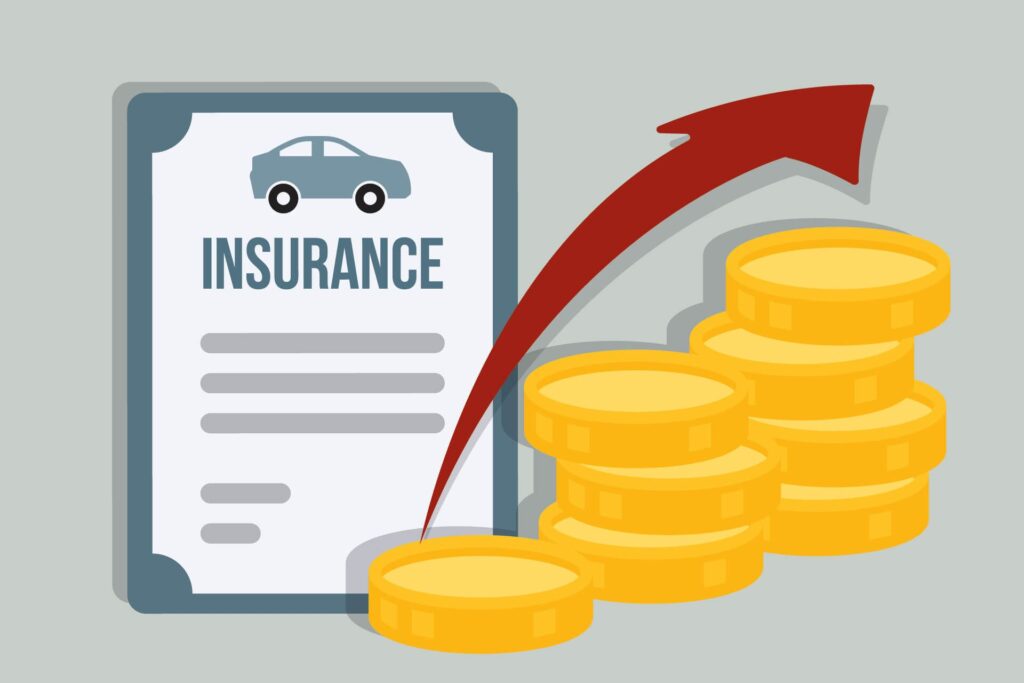
The insurance industry in America is a colossal financial powerhouse, reportedly generating a staggering $1,000,000,000,000 annually from premiums, as highlighted by the American Association for Justice (AAJ). This immense sum, one trillion dollars each year, underscores the vast resources at play within a sector that is ostensibly designed to protect individuals and businesses from unforeseen financial burdens. However, beneath this veneer of security, a deeper, more troubling reality often unfolds for policyholders who find themselves in need of the very coverage they’ve faithfully paid for.
For countless individuals, navigating the complexities of insurance claims, particularly after events like a car accident, can transform from a straightforward process into an arduous battle. The American Association for Justice has shed light on this challenging landscape by compiling a critical list of what it deems the worst insurance companies in the United States. Their extensive research, drawing from thousands of records including court documents, FBI files, and revealing testimony from former insurance employees, paints a stark picture of companies that actively work against the best interests of their clients.
These companies, identified by the AAJ, employ a range of questionable tactics designed to minimize payouts and maximize their own profits. From outright rejecting claims and denying legitimate coverage to unjustly jacking up premiums, their strategies systematically disadvantage policyholders. For anyone involved in a car accident and confronting one of these formidable insurers, it’s a crucial realization that these entities are often not allies. Instead, they are equipped with proven tactics to push for settlements that represent merely a tiny fraction of what an injured individual truly needs to recover financially and physically. Understanding these tactics is the first step toward protecting your rights and ensuring fair treatment.

1. **Prioritizing Profits Over People: The Shareholder-First Mentality**
At the heart of many problematic insurance practices lies a fundamental philosophical misalignment: the prioritization of shareholder returns over the welfare of policyholders. This principle, while perhaps a standard tenet in corporate finance, takes on a concerning dimension within the insurance sector, where the very promise of protection is paramount. The American Association for Justice’s investigations reveal that for some companies, the obligation to maximize profits for shareholders overshadows the duty to support customers in their time of need, creating a direct conflict of interest.
A prominent example of this corporate ethos comes from the CEO of Allstate, Thomas Wilson, who explicitly stated that Allstate’s “obligation is to earn a return for our shareholders.” This declaration, as cited by the AAJ, candidly exposes the underlying motive driving many of Allstate’s actions. It suggests that every decision, from setting premiums to processing claims, is viewed through the lens of profitability rather than solely through the lens of policyholder assistance, potentially impacting countless individuals relying on their coverage.
This shareholder-first mentality fosters an environment where cost-cutting measures, particularly in claim settlements, become a central focus. When companies are primarily driven by the imperative to deliver higher returns to investors, the incentive to minimize payouts to policyholders becomes incredibly strong. This often translates into stringent claim evaluation processes, aggressive negotiation tactics, and a general reluctance to readily approve benefits, leaving policyholders vulnerable and financially strained during already difficult periods.
The inherent tension between generating shareholder wealth and fulfilling policyholder obligations shapes the operational framework of these “worst” insurance companies. It’s a foundational issue that permeates various aspects of their business, from how policies are structured and marketed to how claims departments are incentivized. For consumers, recognizing this underlying corporate philosophy is vital, as it explains many of the challenging experiences they may encounter when attempting to access their earned benefits, especially after a car accident.

2. **The “Good Hands” Deception: Fighting Against Your Own Policyholders**
Many insurance companies, particularly those listed among the worst, meticulously craft public images of reliability, care, and unwavering support for their customers. Catchy slogans and reassuring advertisements often promise protection and assistance, cultivating an expectation of benevolent partnership. However, the reality for policyholders can often be a stark contrast to this idealized facade, as internal documents and practices reveal a concerted effort to work *against* the very individuals they claim to serve.
Allstate, a company that famously boasts being in “good hands” through its advertising, stands out as a prime example of this deception, according to the AAJ. Despite its public assurances, documents that the company was compelled to make public demonstrate an internal strategy that actively encourages its employees to “fight against their own policyholders.” This is a deeply troubling revelation, suggesting a systemic approach where the company’s own staff are directed to resist claims, even from loyal customers.
This internal directive transforms the claims process from a supportive service into an adversarial battle. Instead of acting as a helpful intermediary, employees may be pressured to find reasons for denial or reduction, shifting the burden of proof and justification heavily onto the policyholder. Such an environment erodes trust and complicates an already stressful situation, making it exceedingly difficult for individuals to receive the timely and adequate compensation they desperately need after an incident like a car accident.
The consequence of such a strategy is that policyholders, often in vulnerable situations, find themselves battling their own insurer for benefits they believed were guaranteed. This experience can be incredibly disheartening and financially draining, forcing individuals to invest considerable time, effort, and sometimes legal resources just to secure what should rightfully be theirs. The “good hands” become less about offering help and more about grasping tightly onto profits, leaving policyholders feeling betrayed and unsupported when they need their insurer the most.

3. **The Claim Game: Lowball Offers and Hardball Litigation**
Once a policyholder files a claim, especially following an event like a car accident, a common tactic employed by the worst insurance companies is to engage in what can be described as the “claim game.” This involves a calculated strategy of initiating with lowball settlement offers, knowing full well that the true value of the damages or injuries incurred is significantly higher. This initial offer is designed to test the policyholder’s resolve, knowledge, and desperation, hoping they will accept a fraction of what they are owed.
The American Association for Justice points to Allstate as a notable practitioner of this approach, stating that the company “essentially uses a combination of lowball offers and hardball litigation.” This dual strategy is particularly effective. Policyholders, often overwhelmed by medical bills, repair costs, and lost wages, may feel compelled to accept an inadequate offer simply to alleviate immediate financial pressure. They might not have the resources or the energy to fight a prolonged battle against a financially powerful insurer.
If a policyholder rejects the initial lowball offer, the company then pivots to “hardball litigation.” This involves drawing out the legal process, introducing bureaucratic hurdles, and even challenging the validity of claims in court. The objective here is clear: to wear down the policyholder through attrition, making the process so financially and emotionally taxing that they eventually capitulate and accept a lesser settlement, or simply give up altogether. This tactic is especially devastating for individuals without extensive legal support.
The context highlights the immense profitability of such tactics for the insurance companies. For instance, while many injured claimants received far less than they deserved or nothing at all, Allstate’s CEO Thomas Wilson received more than $16,300,000 in compensation in 2019. This stark contrast underscores how effective these strategies are at funneling money away from policyholders and into corporate coffers and executive pockets, turning the pursuit of a fair claim into a formidable and often unfair struggle for the average consumer.

4. **Navigating the Labyrinth: Intentionally Confusing Policy Language**
Insurance policies, by their very nature, are complex legal documents designed to detail terms, conditions, and coverage specifics. However, a pervasive and deeply problematic tactic employed by some of the worst insurance companies is the deliberate use of “highly confusing policy language.” This isn’t merely a byproduct of legal necessity; rather, critics suggest it’s a strategic maneuver designed to create ambiguity, obscure limitations, and ultimately provide grounds for denying claims that policyholders genuinely believe are covered.
The AAJ’s findings indicate that Allstate, for example, has faced significant criticism for employing such language. Policyholders are led to believe they possess certain comprehensive coverage, nurturing a sense of security and trust in their investment. Yet, when a critical event occurs, such as a car accident, and a claim is filed, they are met with a swift denial. This denial often hinges on a nuanced interpretation of a clause or an exclusion buried within the labyrinthine policy document, which the policyholder, despite their best efforts, failed to fully comprehend.
The intention behind this deliberate obfuscation is insidious: to collect premiums from a broad base of policyholders who operate under a false assumption of robust protection. When disaster inevitably strikes, these same policyholders discover, too late, that their supposed “comprehensive coverage” offers no recourse for their specific situation. This leaves them in a devastating position, having paid into a system that ultimately failed to deliver on its implied promise, with little to no legal leverage to challenge the intricate wording.
Effectively, these companies leverage the complexity of insurance contracts to their financial advantage. By making it exceedingly difficult for the average person to fully grasp the precise boundaries and limitations of their coverage, they ensure a steady stream of premium income while simultaneously building a robust arsenal of justifications for claim denials. For consumers, this means the onus is heavily on them to meticulously dissect every line of a dense legal document, a task many are ill-equipped to perform, leading to widespread disappointment and financial hardship.
The previous discussion shed illuminating light on the foundational strategies and corporate philosophies that often position certain insurance companies as formidable adversaries against their own policyholders. We uncovered how a relentless pursuit of shareholder profit, coupled with internal directives to contest claims, aggressive settlement maneuvers, and deliberate convoluted policy language, forms a systemic barrier to fair treatment. These foundational strategies, while perhaps cloaked in corporate jargon, reveal an industry dynamic where trust is systematically eroded.
Now, our focus sharply pivots from philosophy to the practical, often devastating, execution of these detrimental strategies. This section will delve deeper into the tangible impact on consumers, specifically examining the systematic denial of valid claims, the burden of unjustified premium increases, and the vast financial gains consistently amassed by the insurance industry through these practices. We will highlight the stark disparity between corporate earnings and policyholder compensation, offering critical insights into the broader implications for every individual who relies on insurance for peace of mind.

5. **The Pervasive Practice of Systematic Claim Denial**
Beyond initial lowball offers and the threat of prolonged litigation, a more insidious tactic employed by the “worst” insurance companies is the systematic denial of valid claims. This isn’t merely a casual rejection; it’s often a calculated, multi-layered process designed to exhaust and overwhelm policyholders, compelling them to abandon their rightful pursuit of compensation. The overarching objective is clear: drastically reduce claim payouts by making the process so arduous that many claimants simply give up.
Often, the first communication following a claim submission isn’t approval, but an extensive and repetitive request for additional, sometimes irrelevant, documentation or a self-serving re-interpretation of an obscure policy clause. These incessant requests, perceived as bureaucratic stonewalling, can significantly delay resolution for weeks or even months. For individuals grappling with the immediate aftermath of a car accident—facing mounting medical bills, vehicle repair costs, and lost wages—these deliberate delays and frustrating bureaucratic hurdles can be financially crippling and emotionally draining.
This systematic approach meticulously shifts the arduous burden of proof squarely onto the policyholder, transforming what should be a straightforward administrative process into an adversarial legal battle. Insurance adjusters, often operating under intense internal pressure, alongside well-resourced legal teams, are exceptionally adept at scrutinizing every minuscule detail of a claim. Their primary directive is to seek out any minor discrepancy, omission, or technicality that could serve as a pretext for partial or outright denial, frequently doing so regardless of clear, objective evidence supporting the claim.
The human and societal cost exacted by such systematic denials is immense. Policyholders, who have diligently paid premiums, often find themselves cruelly abandoned precisely when they are most vulnerable. The profound stress of being forced to battle their own insurer can exacerbate existing physical injuries, significantly prolong recovery, and tragically plunge entire families into severe financial distress. This disheartening reality underscores a grim situation where the promise of protection gives way to a calculated system of evasion, leaving countless individuals betrayed, financially vulnerable, and frequently without genuine legal recourse.
Read more about: Seriously, Where Did These Go? 13 Haunting ‘Beloved’ Mysteries We Need Answers To!

6. **The Burden of Unjustified Premium Hikes**
Another critical and impactful dimension of these detrimental strategies, though often operating with less immediate public visibility, is the pervasive implementation of unjustified premium increases. While premiums naturally fluctuate based on various risk factors, the companies identified as the “worst” often impose substantial increases that appear remarkably arbitrary or disproportionately severe compared to a policyholder’s actual risk profile. This is particularly galling when it occurs after only minimal claims, or, even more controversially, in the complete absence of any claims whatsoever. This practice effectively becomes a covert method of offsetting claim payouts and dramatically bolstering corporate profits.
For many conscientious consumers, receiving notification of a sudden and significant premium hike often feels disturbingly akin to a punitive measure, especially when they have diligently maintained an exemplary clean driving record or when a solitary, minor claim was, in theory, entirely covered and justified. These seemingly arbitrary increases can be shockingly substantial, forcing policyholders to commit to paying significantly more money for precisely the same, or even diminished, levels of coverage. The striking absence of transparent, verifiable justification for such steep hikes further intensifies public suspicion, strongly suggesting these adjustments are less about genuine actuarial risk and more fundamentally about the relentless pursuit of maximizing revenue streams.
This calculated tactic is in perfect, albeit disturbing, alignment with the “shareholder-first” mentality. Every additional dollar meticulously collected in premiums, particularly those generated through these less-than-transparent increases, directly and unequivocally contributes to the company’s robust bottom line and, by direct extension, to the attractive returns for their shareholders. It fundamentally represents a sophisticated and highly effective method of extracting ever-greater financial value from the existing customer base, serving as a powerful supplement to the substantial profits already accrued from systematic claim denials and the strategic deployment of lowball settlement offers, all without any corresponding improvement in the quality of service or benefits provided.
The pervasive impact of these unjustified premium hikes on consumers is profound and often financially debilitating. Faced with an escalating cycle of rising premiums, policyholders frequently find themselves ensnared in an unenviable dilemma. The process of diligently researching and switching insurance providers can be an incredibly complex, time-consuming, and emotionally taxing undertaking. Furthermore, in certain circumstances, a history of even a minor claim or previous premium increases can paradoxically make finding an equally affordable, or even comparable, alternative policy exceptionally challenging. This scenario regrettably creates a powerful “captive audience” effect, compelling individuals to continue paying increasingly exorbitant rates merely to maintain essential coverage, even when they suspect these continuous increases are patently unfair and financially exploitative.

7. **The Alarming Disparity: Corporate Gains vs. Policyholder Losses**
The cumulative and deeply troubling effect of these multifaceted detrimental strategies—ranging from widespread, systematic claim denials and aggressive lowball offers, to deliberate obfuscation through confusing policy language and the consistent imposition of unjustified premium increases—culminates in an alarming and morally questionable disparity that truly defines the “worst” echelon of the insurance industry. While countless policyholders are left struggling, often desperately, to secure their rightful benefits and are simultaneously confronted with rapidly escalating financial burdens, the monolithic corporate entities at the helm of these companies continue, year after year, to report staggering, record-breaking profits and reward their top executives with outrageously generous compensation packages, thereby creating a stark, ethically disturbing, and widening contrast.
Let us vividly recall the immense figure of $1,000,000,000,000 (one trillion dollars) in annual premiums routinely generated by the sprawling American insurance industry. This colossal sum, when viewed in conjunction with the meticulously detailed and often predatory tactics employed to aggressively minimize payouts, directly and irrefutably translates into truly vast financial gains for these companies. Each denied claim, every reduced settlement that is coerced, and every additional dollar extracted from an unjustified premium hike, incrementally yet powerfully, contributes to an ever-growing, seemingly insatiable pool of corporate wealth. The entire system is, quite evidently, intricately designed and strategically optimized to efficiently funnel monumental sums of money away from those who diligently pay for essential protection and directly toward the burgeoning corporate balance sheets.
This profound and unsettling disparity is far from being merely anecdotal; it is robustly evidenced by the consistently substantial compensation packages routinely received by top-tier executives within these corporations. The compelling example of Allstate CEO Thomas Wilson’s exorbitant compensation, exceeding $16,300,000 in 2019, contrasting sharply with the tragic reality that many injured claimants received either a pittance or, devastatingly, absolutely nothing, is not an isolated incident. Rather, it serves as an exceptionally powerful illustration of this pervasive, systemic imbalance, where the financial well-being of a highly select few is consistently prioritized over the collective security and rightful compensation of millions of trusting policyholders.
This vast and ever-widening financial chasm fundamentally and irrevocably undermines the very core principle of insurance, an institution traditionally built upon the noble premise of shared risk and mutual, collective protection. Instead of serving its intended social purpose, it tragically transforms into a highly efficient mechanism for immense wealth transfer, where the financial vulnerabilities and misfortunes of ordinary individuals are systematically and ruthlessly exploited for the insatiable pursuit of corporate gain. The long-term and detrimental implications are a continuous and corrosive erosion of public trust, significantly increased financial instability for countless consumers, and the relentless perpetuation of a deeply inequitable system where the immensely powerful consistently benefit at the severe and often irreparable expense of the diligent, everyday citizen.
In the sprawling and complex landscape of American finance, few sectors wield as much pervasive power and generate as much breathtaking revenue as the omnipresent insurance industry. Yet, as our comprehensive analysis has meticulously explored, this immense financial prowess is often built upon practices that systematically and consistently disadvantage the very people it solemnly pledges to serve. Therefore, understanding these intricate strategies—from the philosophical prioritization of profit to the practical execution of claim denials and premium hikes—is not merely about identifying the “worst” companies or states; it is about empowering consumers. By proactively recognizing these inherent conflicts and strategically deployed tactics, policyholders can arm themselves with the indispensable knowledge needed to vigorously advocate for their fundamental rights, challenge demonstrably unfair practices, and adamantly demand the equitable treatment and rightful compensation they are genuinely owed. It is a fervent call to sustained vigilance, a powerful reminder that in the often-opaque world of insurance, being thoroughly informed and strategically prepared stands as your most potent defense against becoming another statistic in the relentless pursuit of corporate profit.



